-
Posts
1,572 -
Joined
-
Last visited
Content Type
Profiles
Forums
Gallery
Events
Posts posted by Garward
-
-
Hi, Keith, thanks for the comment! Work on replacement in itself not difficult, but long and tiresome. There is a lot of these channel deadeye

-
Hi, Robert! I delighted with your boat ! ! !
 It is quite difficult to make the good boat of a tree, and you do it perfectly of a bone!
It is quite difficult to make the good boat of a tree, and you do it perfectly of a bone! 

-
I might add that the use of selenious acid as a blackening agent did not come about until the 20th century. So, its use for old ship guns never happened, at least not on purpose

It is natural that selenious acid wasn't applied at 18-19 eyelids. Cast bronze trunks of guns of that period in general it is artificial not зачернялись, they darkened in the course of their operation (firing from them and cooling with vinegar solution).
-
I think we are mixing here two issues, what was done in real life and what to do for models. Garward, you were talking about models, while dafi was talking about the real thing.
Yes, some of the 'quick blackening' agent contain selenous acid.
wefalck
Pay attention that the name of a subject was changed in the course of discussion, in the beginning it was a question about blackening of gun trunks in general, instead of of blackening of real gun trunks by the historical ships.
-
-
First, thanks for sharing the information.
I have purchased and sharpened a couple of 18 ga needles and placed them in my drill press. Unfortunately, the nails always break off inside the needle. There, they turn to dust and are not useful.
I tried pine and maple woods, end grain and side grain.
Is there some special wood I should use or do I need to use a high speed drill?
спасибо
(Thank you)
For production of nails it is desirable to use the same wood of which the deck flooring is made. It is possible to try soft wood a linden. As for the boring machine, here it is necessary to pick up correctly turns, usually it becomes experimentally, taking into account a type of wood and type needles.
-
So the starboard guns are now installed. Then again maybe it's the port side ah hell the guns are in on the left side. The snake is definatly getting more attention right now but I am still putting tackle on the blocks and finishing up my life boat and oars. Is it me or are my oars a little too long?
 image.jpg
image.jpg image.jpg
image.jpg image.jpg
image.jpgTell please, in what way you blackened gun trunks?
-
And it is correct, did garbage - clean! Yes,Anja, it is called a joke "шутка"

-
-
I welcome at a forum, Sergey! Good work, here that means thoughtful approach to model construction from a kit!
-
But still the question: Is it the same result on the guns as the contemporary paints?
So we are having three different types of guns: brass, iron and steel. Each different in the upkeeping :-)
Daniel
Solutions for a chemical blackening of trunks of the guns made of different materials, differ among themselves a little, but the structure of many of them includes selenious acid. This acid is widely used by jewelers also enough.
-
Application of various chemical means for metal burnishing which are on sale in shops for hunters, too yields quite good results.
-
The vinegar for internal cleaning of brass and cast iron barrels was used to dissolve the residues of black powder. Normally, it was a three-stage procedure: vinegar, (sea)water, grease/tallow.
wefalck
For real barrels it is known and it is clear. And what you can tell about that, how many time needs to be processed for blackening by vinegar solution a trunk from brass which is made for model and doesn't shoot?

-
-
Thanks for the comments so far, I would really appreciate any information that anyone has on available material to assist in working up the Mamoli Surprise.
Cheers,
David.
Please, Mamoli Surprise photo gallery -
Frome a late 19th century German source for steel guns: rub down the barrel repeatedly with vinegar. Once a firmly attached brown iron-oxide layer has developed, paint in lineseed oil. To be rubbed down with a cloth soaked in lineseed oil for maintenance. Be sure not let the vinegare etc. into the barrel (particularly in the case of rifled barrels).
This seems to implicate that the barrels were of a satin brownish colour, which is also evidenced by contemporary paintings.
Cast iron guns, according to the same source were to be painted in oil paint.
wefalck
The interesting recipe repeating procedure applied by the real ships of cooling of gun trunks at firing: trunks were cooled with vinegar solution (were covered with tarpaulin and poured down). You won't tell, how many it is necessary to vinegar solution a trunk from brass which is made for model and doesn't shoot?

-
I wrap masking tape around the drill bit to act as a depth stop.
Russ
Simply, quickly and effectively!

-
Oh I have a recipe for you! Its from The Kedge-Anchor by William Brady, published in 1847. On page 389 near the end of the book, almost as an afterthought, he gives three pages of recipes for painting and blacking stuff. There are three recipes for blacking guns, plus a French recipe. I'm going to transcribe the first gun blacking recipe here: "For Blacking Guns: Six pounds of beeswax mixed with one gallon of spirits of turpentine, one paper of lamp black, mixed well together, for twenty 24 pounders Note- The beeswax is to be cut fine, and dissolved in spirits of turpentine before mixed with the lamp black."
For the French recipe there is this: "French Recipe For Blacking Guns.&c. To one gallon of vinegar, put ten ounces of lamp-black, and one pound and a-half of clear sifted iron rust, and mix them well together. Lay this on the guns after a good coat of black paint, and rub it occasionally with a soft oil cloth."
My favorite though is his recipe "For Blacking Ship's Standing Rigging. To a half a barrel of tar add 6 gallons of whisky, 4 pounds of litharge, 4 pounds of lamp black, 2 buckets of boiling beef-pickle,or hot salt water out of the coppers, if the other cannot be had conveniently ; mix well together and apply immediately."
He has five recipes for blacking hammock cloths.
Interesting ancient recipes which shouldn't be forgotten, they contain useful information. You couldn't show a photo with results of application of these recipes for blackening of gun trunks?
-
-
Hello, Juergen! Good work, it is pleasant to look!
-
-
Amen, Garwood.
And what it has to mean?
-
Some grades of glue applied by Russians and the Ukrainian modellers, it is possible to look here http://shipmodeling.ru/shop/category/16/section/112/
-
I meant a large amount of glues like PVA and the epoxy glues which are let out in the different countries and some of different among themselves, and also, for example, electroconductive glue.



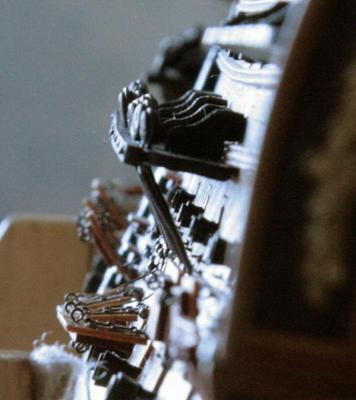

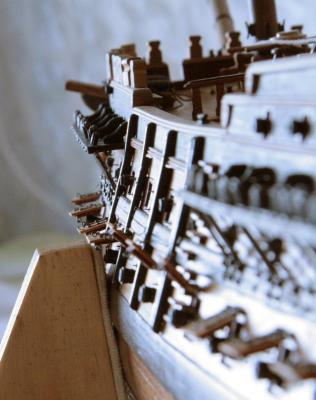
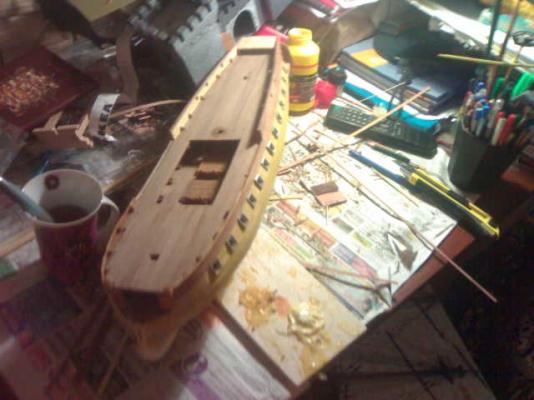
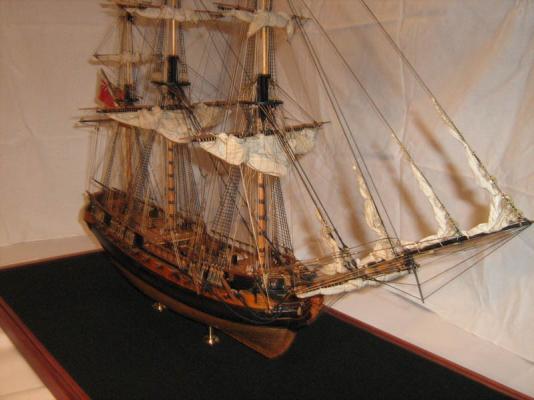
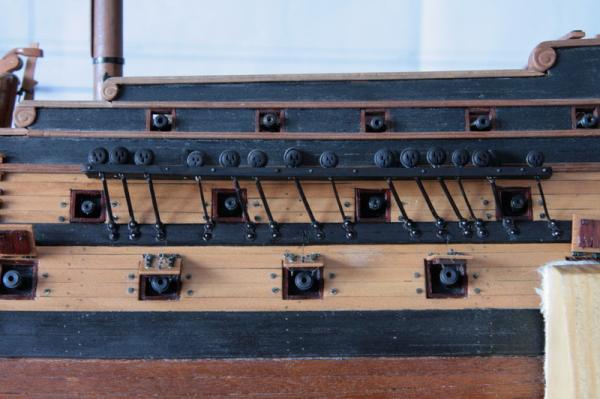
MONTANES by Garward - OcCre
in - Kit build logs for subjects built from 1751 - 1800
Posted
Yes, we had to focus not on the instructions, and the finished model, such as this http://www.modelismonaval.com/galeria/category/100-navio-qel-montanesq-salvador-pallares-ruiz